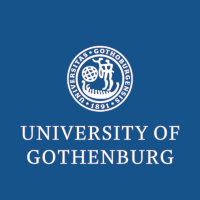How do words get in order? the role of speaker-hearer interaction in languages of South Africa
- Event: Seminar
- Lecturer: Eva-Marie Bloom Ström
- Date: 23 March 2022
- Duration: 2 hours
- Venue: Gothenburg and Online
Abstract:
Referred to as verum focus since Höhle (1992), the emphasis on the expression of truth of a proposition is realized in in a variety of ways in languages. For example, German is analyzed as having a verum operator, realized as non-contrastive focus on the verb or the complementizer, while English and Spanish use lexical insertions (Gutzmann and Castroviejo Miró 2011):
- Cross-linguistic examples (Gutzmann and Castroviejo Miró 2011: 144)
A: I wonder whether Carl has finished his book.
B1: Karl HAT sein Buch beendet.
B2: Carl did finish his book.
B3: Carlos sí acabó su libro.
The Bantu languages are known for their high word order flexibility. Different word orders interact with subject vs. expletive agreement, object agreement vs. lack thereof, as well as marking on the noun. The use of the different word orders relates to information structure (Downing and Hyman 2015). However, the finer details of discourse organization are still to be determined. And, the factors characterizing the marking of verum are unexplored for the Bantu languages. What we do know, is that focus is typically not marked through prosodic prominence in these languages (Kanerva 1990, Zerbian 2007). In my most recent VR-project, on which I will start this year, the aim is to investigate the role of different word orders in relation to information structure, and specifically also to answer the question of how verum is expressed. In this talk, I will present the background to this as well as preliminary findings. The project focuses on the Nguni subgroup of Bantu languages (Zulu, Xhosa, Ndebele). For Xhosa, there is an existing corpus developed during previous projects, containing a variety of e.g. conversations, procedural texts (e.g. explaining how to build a house) and narratives (Bloom Ström 2018). A secondary aim or output of the project is to digitize this small but unique collection of spoken Xhosa, with data from around the Eastern Cape; to bring this corpus online and make it searchable and available to a wider audience. As there are audio and video recordings, this aim comes with specific technical challenges which are still to be tackled.
References:
Bloom Ström, Eva-Marie. 2018. Linguistic and sociolinguistic aspects of variation in the Eastern Cape: complexities of Xhosa language use. Studia Orientalia Electronica 6:90-120.
Downing, Laura J. and Larry M. Hyman. 2015. Information structure in Bantu. In Caroline Féry and Shinichiro Ishihara (eds): The Oxford Handbook of Information Structure. Oxford handbooks online: Oxford University Press.
Gutzmann, Daniel and Elena Castroviejo Miró. 2011. The dimensions of verum. Empirical issues in syntax and semantics 8:143-165.
Höhle, Tilman. 1992. ‘Über Verum-Fokus im Deutschen’. In J. Jacobs (ed.) Informationsstruktur und Grammatik, 112-142. Germany: Westdeutscher Verlag Opladen.
Kanerva, Jonni M. 1990. Focus and phrasing in Chichewa phonology. New York: Garland Publishing.
Zerbian, Sabine. 2007. Investigating prosodic focus marking in Northern Sotho. In Katharina Hartmann, Enoch Aboh and Malte Zimmermann (eds): Focus Strategies in African Languages: The Interaction of Focus and Grammar in Niger-Congo and Afro-Asiatic, 55-79. Berlin: Mouton de Gruyter.
